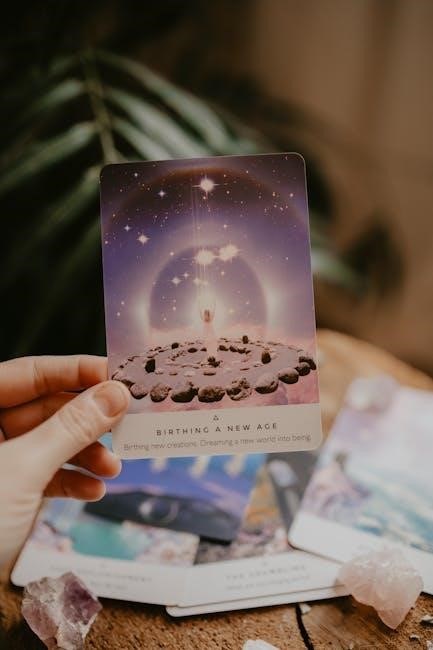Guide tones are essential in jazz music theory‚ forming the foundation of chords and harmony‚ with
- key tones
that help navigate chord progressions‚ creating a solid harmonic awareness foundation always.
Definition and Importance
Guide tones are notes that form the foundation of a chord‚ typically the 3rd and 7th scale degrees‚ which are crucial in defining the sound and feel of a chord progression.
In jazz music theory‚ guide tones play a vital role in creating harmonic awareness and navigation‚ allowing musicians to improvise and compose with confidence and clarity.
The definition of guide tones is closely related to their importance in jazz harmony‚ as they provide a framework for understanding and manipulating chord progressions.
By focusing on guide tones‚ musicians can develop a deeper understanding of jazz music theory and improve their improvisational skills.
Guide tones are essential in jazz music‚ and their importance cannot be overstated‚ as they provide the underlying structure for harmonic progression and improvisation.
The use of guide tones is a fundamental concept in jazz music theory‚ and their definition and importance are closely intertwined.
Guide tones are used to create a sense of harmonic resolution and tension‚ which is essential in jazz music.
Understanding guide tones is essential for any musician looking to improve their jazz skills.
The importance of guide tones lies in their ability to provide a sense of harmonic direction and resolution.
Guide tones are a fundamental concept in jazz music theory‚ and their definition and importance are essential for any musician looking to improve their skills.
The definition and importance of guide tones are closely related to their use in jazz harmony and improvisation.
In conclusion‚ guide tones are a crucial element in jazz music theory‚ and their definition and importance are essential for any musician looking to improve their skills and understanding of jazz harmony.

Benefits of Learning Guide Tones
Learning guide tones enhances harmonic awareness‚ improves improvisation skills‚ and increases musical confidence‚ with
- key benefits
for jazz musicians always.
Harmonic Awareness and Navigation
Guide tones play a crucial role in developing harmonic awareness and navigation skills‚ allowing musicians to better understand the chord progression and create more cohesive improvisations. By focusing on these key tones‚ musicians can develop a deeper understanding of the harmonic structure of a piece‚ and navigate the changes with greater ease. This‚ in turn‚ enables them to create more nuanced and sophisticated improvisations‚ that are firmly rooted in the harmony of the music. With a strong foundation in guide tones‚ musicians can improve their ability to hear and respond to the harmonic implications of a chord progression‚ and develop a more intuitive sense of harmonic awareness and navigation. This skill is essential for jazz musicians‚ as it allows them to create complex and nuanced improvisations‚ that are deeply rooted in the harmonic structure of the music‚ and to navigate the changes with confidence and authority.

Guide Tones in Jazz Music Theory
Guide tones define jazz chord feel‚ navigating musicians through chord progressions with harmonic clarity always using
- key tones
and music theory foundations.
Relationship with Chord Progressions
Guide tones play a crucial role in understanding and navigating chord progressions‚ as they provide a harmonic foundation for musicians to improvise and compose music. The relationship between guide tones and chord progressions is deeply intertwined‚ with guide tones serving as a framework for chord changes. By focusing on guide tones‚ musicians can develop a deeper understanding of harmonic movement and progression‚ allowing them to create more cohesive and meaningful music. This relationship is essential in jazz music theory‚ where chord progressions are often complex and nuanced. Guide tones help to clarify the harmonic landscape‚ providing a sense of direction and purpose for the music. With a strong understanding of guide tones and their relationship to chord progressions‚ musicians can unlock new levels of creativity and expression in their music‚ leading to more engaging and effective performances. This understanding is vital for jazz musicians.

Combining Guide Tones with Other Concepts
Guide tones combine with diatonic and chromatic surrounding tones‚ creating a system for spontaneous melodic vocabulary generation‚ using
- approach tones
to enhance musical expression always.
Using Diatonic and Chromatic Surrounding Tones
Combining guide tones with diatonic and chromatic surrounding tones enhances melodic vocabulary‚ allowing for spontaneous generation of musical lines. This approach enables musicians to create coherent and meaningful solos. By using
- diatonic tones
that fit within the key‚ and
- chromatic tones
that add color and tension‚ musicians can add depth and complexity to their improvisations. The use of surrounding tones also helps to create a sense of forward motion‚ as the listener is guided through the harmonic progression. With practice and experimentation‚ musicians can develop a rich and varied vocabulary of melodic ideas‚ using guide tones and surrounding tones to create a unique and expressive sound. This approach can be applied to various musical contexts‚ from jazz and improvisation to composition and arrangement‚ making it a valuable tool for musicians to explore and master. Effective use of surrounding tones requires a strong understanding of harmony and melody.

Exercises and Applications
Guide tones are applied through
- practical exercises
and transcriptions to improve jazz improvisation skills always.
Practical Examples and Transcriptions
Guide tones can be applied through practical examples and transcriptions to improve jazz improvisation skills. By analyzing and transcribing solos from renowned jazz musicians‚ one can gain insight into how guide tones are used to create cohesive and meaningful improvisations. This process involves identifying the key tones and chord progressions used in a particular solo‚ and then applying this knowledge to create one’s own improvisations. Through this method‚ musicians can develop a deeper understanding of guide tones and how to use them effectively in their own playing. Additionally‚ practical examples and transcriptions can help to illustrate the concept of guide tones in a more concrete and tangible way‚ making it easier for musicians to grasp and apply this concept in their own music. This approach can be particularly useful for those looking to improve their jazz improvisation skills.
